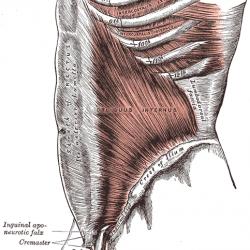Desk Job Dilemma — How to Maintain Healthy Posture at Work
Spending your workday at a desk in front of a computer may not seem as physically demanding as performing heavy manual labor. However, if you do not mind your posture while sitting, you can develop painful strains and soft tissue injuries in your back and other parts of your body.
Good posture is essential for living and working without pain. But practicing good posture at your desk involves more than simply sitting up straight. How you organize your workspace and the furniture you use can support your efforts at maintaining good posture or work against you.
Understanding Good Posture
There are several components to a good seated posture. These components involve keeping the following:
- Your knee, hip, and ankle joints at an angle of at least 90 degrees
- Your ankles in front of your knees
- At least three fingers-width of space between the front of your chair and the back of your knees
- Your feet flat on the floor or a footrest
You should also sit up straight with your shoulders relaxed and the lumbar support of your chair resting on the lumbar region of your back.
Good posture benefits go beyond simply reducing the likelihood of back and muscle injuries. It can reduce pain associated with osteoarthritis and neck, knee, and hip joint pain.
You can also experience stronger core muscles throughout your mid-body, making breathing easier. Good posture can also improve your mood and energy levels.
The Ergonomics of Your Workplace
As you consider improving your posture, look around at your workspace and consider improvements you can make to support your body and its posture while seated. Ergonomic furniture like special desks and chairs support good posture by helping your body remain in an optimal position while working.
Even if you cannot afford ergonomic furniture, adjusting your desk space can assist in developing good posture habits. In addition to sitting up straight, keep your forearms and wrists level and straight. Adjust your monitor and seat so that you look slightly down, at about a ten to 30-degree angle at your monitor.
Regular Movement and Stretching
No matter how ergonomically designed your workplace and furniture are, you should take frequent breaks throughout the day to stretch. While you should get up and walk around after sitting for 50 minutes, stretching at your desk can benefit you. Stretches you can try include the following:
- Reach your arms to the sky while remaining seated
- Straighten your legs and fold at the waist while keeping your back straight
- Press the palms of your hands together for 15 seconds, and then press the backs of your hands together for 15 seconds
- Place one hand on the opposite shoulder and use the other arm to press on your elbow
If you can get up, stand behind your chair and stretch your calves. Walk around the office or wherever you can for a few minutes before returning to your desk to continue work.
There are also other ways to remain mobile while working. Some desks are adjustable, allowing you to raise or lower the desk's height so you can alternate between standing and sitting. Other desks incorporate a small treadmill, allowing you to stand and walk while working.
Building Posture-Friendly Habits
Developing good posture takes time and practice. If you have not given much thought to how you are seated throughout the day, start by becoming more aware of your body positioning. Take frequent breaks to stop and correct your posture if you are slouching or otherwise not practicing good posture.
If you have many different areas of your posture to work on, focusing on one or two at a time may make developing good posture more manageable. When those areas become second nature to you, you can move on to correcting other parts of your posture.
Addressing Early Signs of Posture-Related Problems
Unfortunately, problems caused by poor posture will worsen over time. The sooner you recognize warning signs suggesting your body is enduring unnecessary wear and tear, the sooner you can intervene and prevent further complications. Some signs to watch for include:
- Aching and painful joints
- Back pain
- Rounded shoulders
- Headaches
If correcting your posture does not alleviate your symptoms, or if they worsen even with corrective measures, it may be worthwhile to visit a physician or physical therapist. These professionals can recommend additional exercises or procedures that can help alleviate your pain and symptoms.
Good Posture at Your Desk Improves Your Quality of Work and Life
There is never a bad time to take posture at your desk seriously. If you experience pain, headaches, and other symptoms associated with bad posture, being mindful of how you sit can be the first step toward addressing these issues.
Remember to take frequent breaks to stretch and walk. If your symptoms do not improve, do not hesitate to speak with a medical professional about other options.
More to Read:
Previous Posts:







